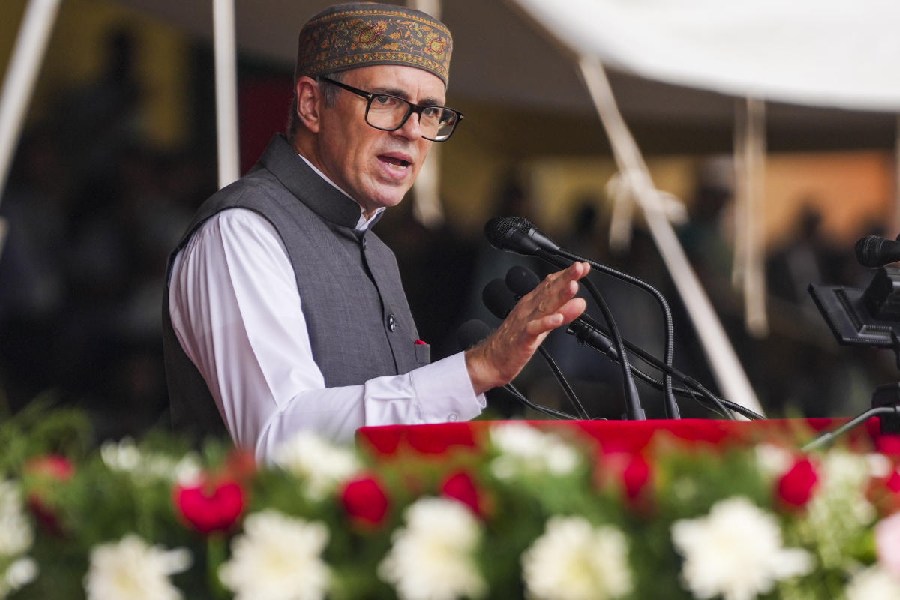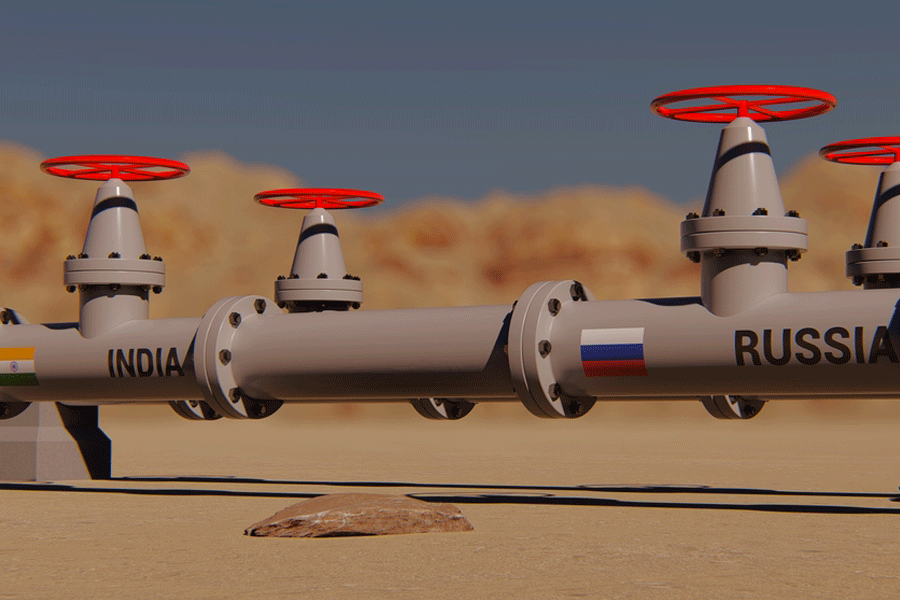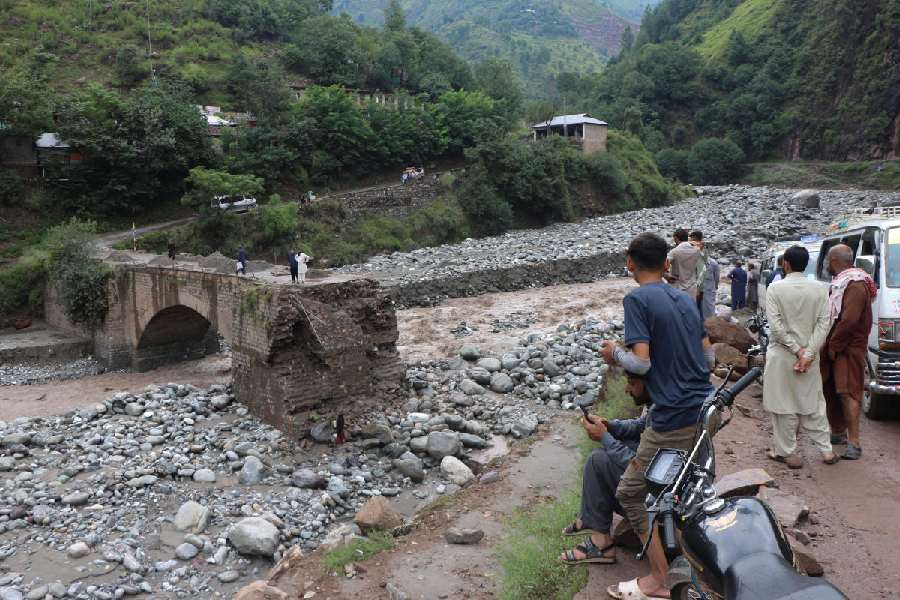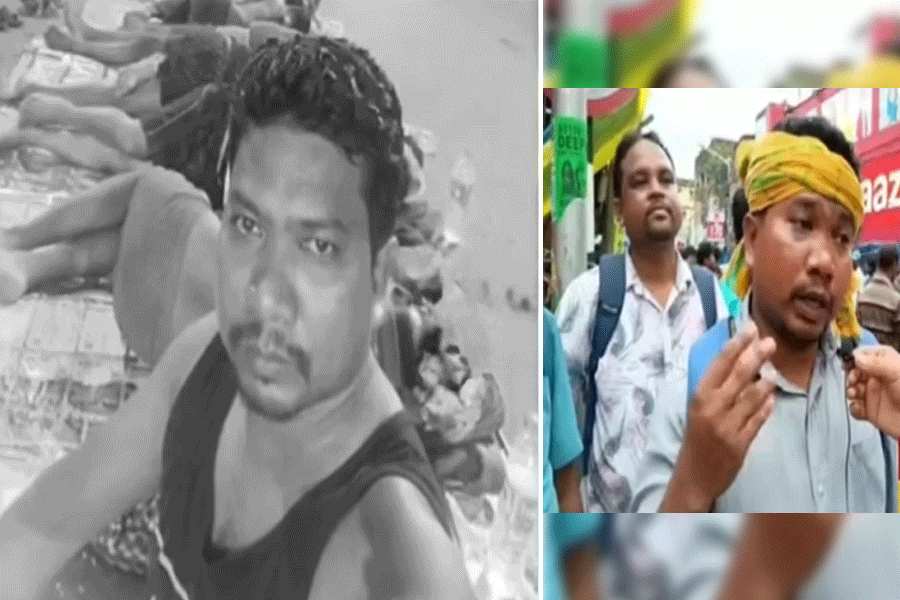Bones and skin of pmch
Present pictures
 |
 |
| Steel future: The ceiling of operating theatre 4 of Patna Medical College and Hospital collapsed on Saturday, sparking panic among patients. The health hub could switch to a steel OT, which experts claim, is the best option for surgeries |
What is a modular steel OT?
The walls and roof of the OT are covered with a seamless steel sheet and given a coat of
anti-bacterial and anti-fungal paint. The corners have curves but no sharp edges. The few
joints there have metal fillers There are no wooden or concrete structures inside the room, not even tables or shelves. The shelves, where surgical instruments and emergency
medicines are stored, are built into the steel walls and have glass covers. Thermal pads
are placed between the concrete wall and the steel sheet to control temperature
Floors have tiles fitted on copper mesh with coats of anti-microbe paints
The OTs have sliding metallic airtight doors, operated by sensors
What does a conventional OT have?
A conventional OT is like any other room, made of concrete walls and floors. The walls and floors are given a coat of anti-microbe paint
Why is a steel OT better than a conventional OT?
Steel interiors help in better infection control. Since it’s seamless and free of joints, the possibility of accumulation of dust and germs in small corners is less
The steel sheets are easier to clean than concrete walls
A conventional OT requires fumigation after every major surgery but a steel OT needs it once in a while. Despite that a steel OT is better sterilised than a conventional one
There is more space for surgeons and others to move around, as there are no wooden racks
How does it help a patient?
In many cases a patient’s hospital stay gets longer because of infection acquired from the OT during or after surgery. A steel OT reduces chances of infection
Less chance of infection would mean less antibiotics for patients post-surgery. In the West, where all OTs are of steel, doctors prescribe low-grade antibiotics before or after surgery as the chances of infection are minimum.
In a gall bladder stone surgery, doctors in the UK don’t use antibiotics at all
Cardiac surgeon Ramakanta Panda of Mumbai’s Asia Heart Institute, which had steel OTs, prescribes only first-generation antibiotics after a bypass surgery. In Patna, third-generation antibiotics are used to prevent infections after such a complicated surgery. Panda, who led a team of doctors that operated on Prime Minister Manmohan Singh in January 2009, said his hospital had installed modular steel OTs 13 years ago
How is the modular steel structure made?
“The steel shell is manufactured in a factory and transferred to the hospital. The finishing — putting the paint, moulding some sharp edges and filling up of joints with metal — is done at the site,” said Mohammad Ashraf, the director of Mediconz, the Mumbai company that has
done the job at Peerless, Calcutta. It takes about 15 days after the installation for the OT to become ready for a surgery, he said
Sudhesh Sinha on Monday wondered if there was any insurance for the life of his relative assigned a bed under a cracked ceiling at Patna Medical College and Hospital.
Sinha, an employee of Life Insurance Corporation of India, said: “Who will save the patients if the ceiling caves in? I have been coming here for five days since my relative was admitted. I’m very worried for him. This is sheer negligence.”
Sinha’s relative has been admitted to the medical ward of the emergency building. Like him, many other patients have to fight not only their ailments but also the dilapidated infrastructure at the premier health hub of the state.
The bones and muscles of Patna Medical College and Hospital (PMCH) are protruding through its lacklustre exterior in an obscene display of how the virus of apathy has afflicted it over the years.
When a portion of the ceiling of operating theatre (OT) 4 of PMCH caved in on Saturday, it was another alarm for the authorities to sit up and take notice of how a disaster is lurking around the corner. But when The Telegraph visited the health hub on Monday, it was business as usual in the groaning buildings. (See graphics)
At Rajendra surgical block, which houses the OT where two patients were undergoing surgery when the ceiling collapsed, the repair work has begun on Sunday. It will take three more days.
Other places in the block are also in need of urgent repairs, but nobody seems to be bothered.
The ceiling outside the MLA ward has developed cracks. The bathrooms are in a poor condition. Even the outer wall of the block has water seeping through it. Constructed in 1956, the block has had few facelifts in its life.
Patients in other buildings, too, have to constantly encounter the threat of cracked walls and ceiling around them collapsing and burying them in a heap of dust.
At the medical ward of the emergency building — where LIC employee Sinha’s relative is lying under a cracked ceiling — several patients are missing out on good healthcare because of the poor infrastructure.
The relative of a patient, who did not want to be named, said: “Last night (Sunday), a nurse could not administer an injection to my brother, who is a patient here, because of poor light in the ward. This is the true picture of healthcare at PMCH.”
The Tata ward looked even more dangerous. One of the staircases here had iron rods protruding from it. Doctors and other employees of PMCH were also scared of using it.
A senior doctor, who did not want to be named, said: “The staircase needs to be repaired immediately. We have complained about it to the hospital administration but nothing has been done so far.”
Vijendra Singh, an attendant at the ward, added: “An accident can occur any day. If the staircase collapses, many people would be injured. It is the only way one can reach the upper floors.”
An accident was narrowly averted around 15 days ago when a chunk of plaster fell off the ceiling of the dermatology outpatient department. “Doctors were examining patients when the chunk fell. Thank god, no one was injured,” said a Grade IV employee.
Now, iron rods of the ceiling are visible where the chunk fell off.
Asked about the dilapidated condition of the various buildings, PMCH superintendent Amar Kant Jha Amar said the building construction department had conducted a survey on Monday. “They will issue tenders tomorrow (Tuesday) to choose a firm to carry out the repair work,” he said.
Jha said nothing about whether the hospital authorities would come up with an alternative plan to ensure the safety of the patients or not.
Birbal, a junior engineer of the building construction department, who looks after the maintenance work, corroborated Jha’s claim and said: “We shall complete the repair work within seven days.”
What problems have you faced because of the poor infrastructure at PMCH? Tell ttbihar@abp.in











